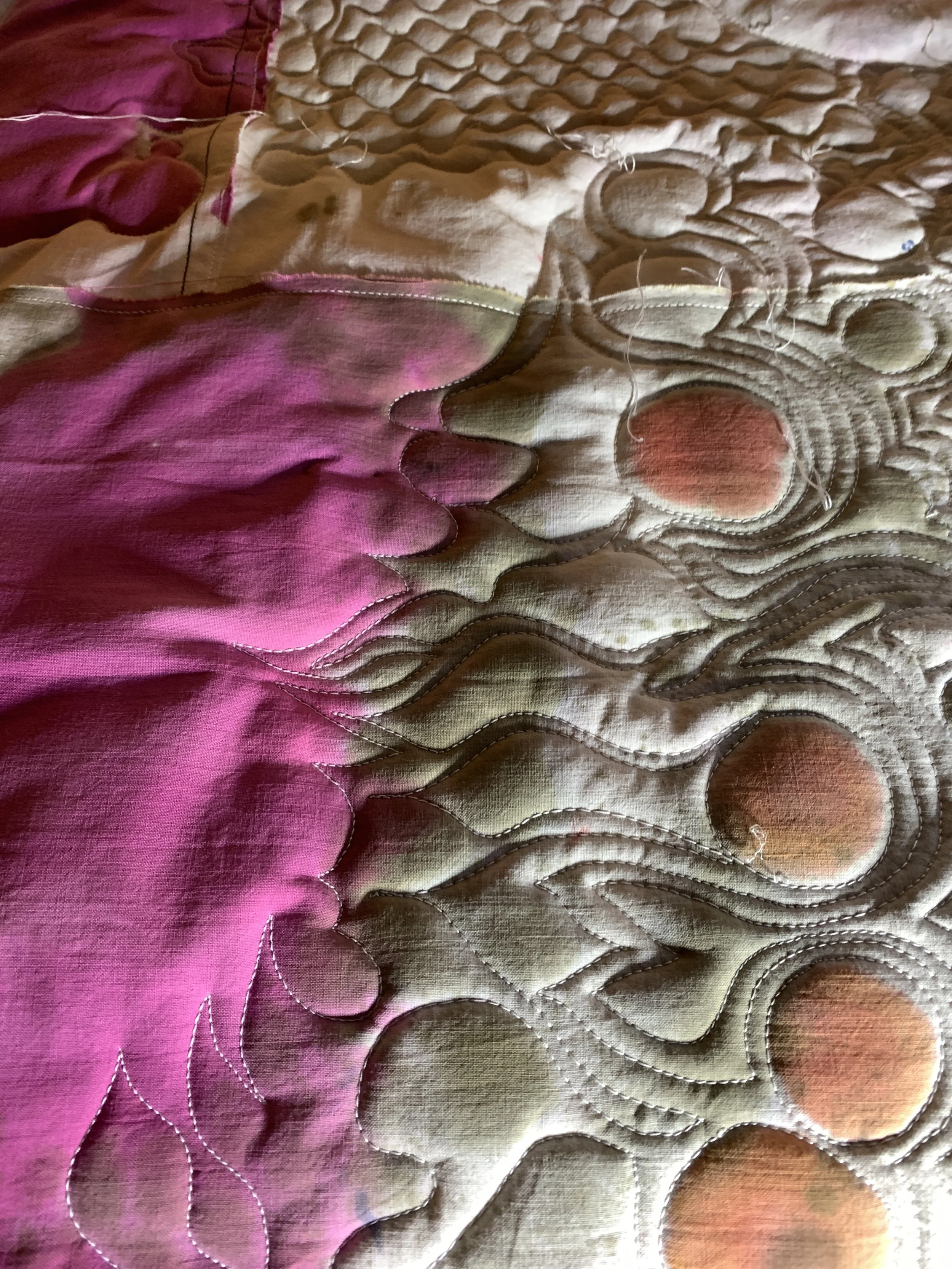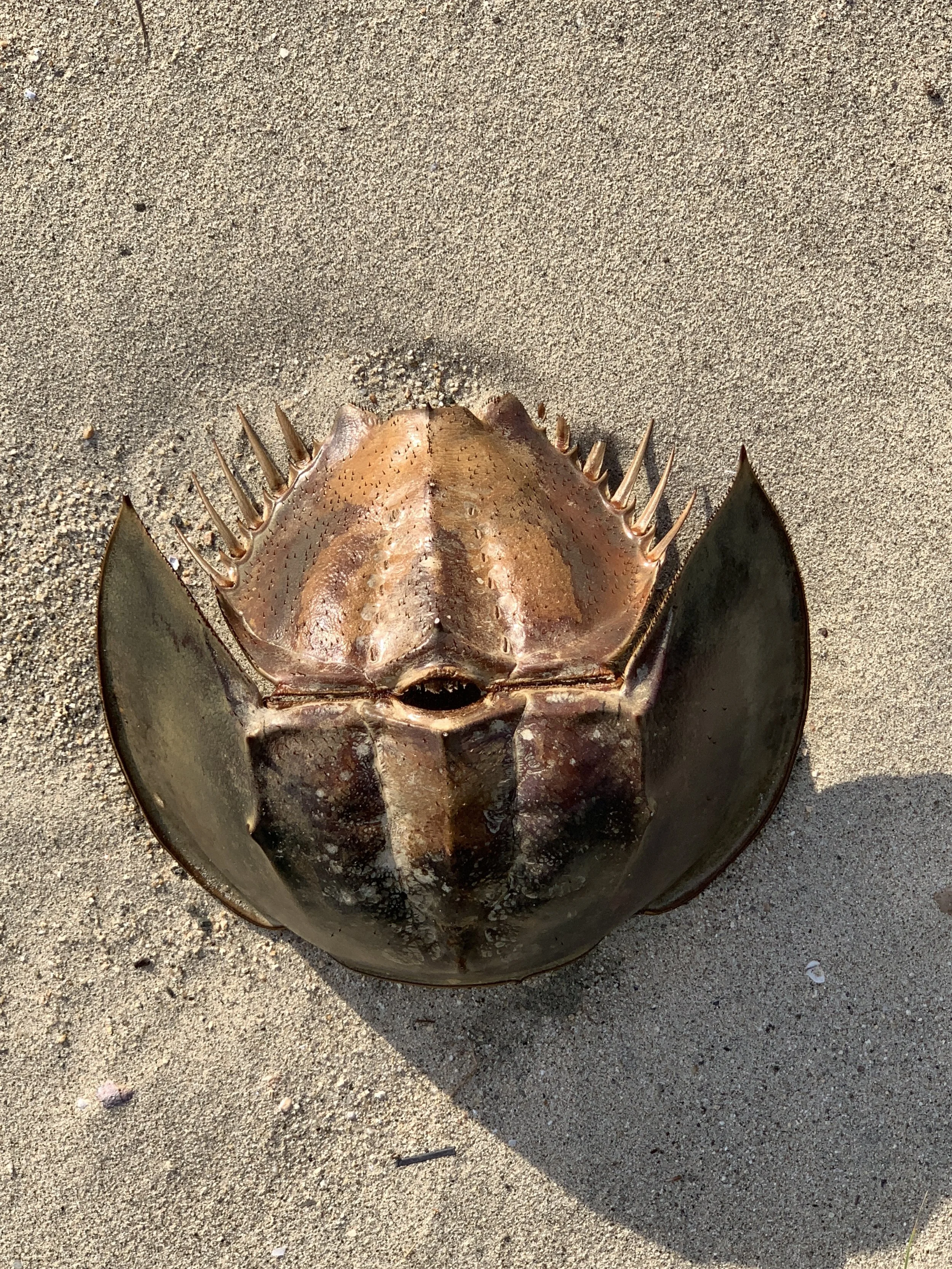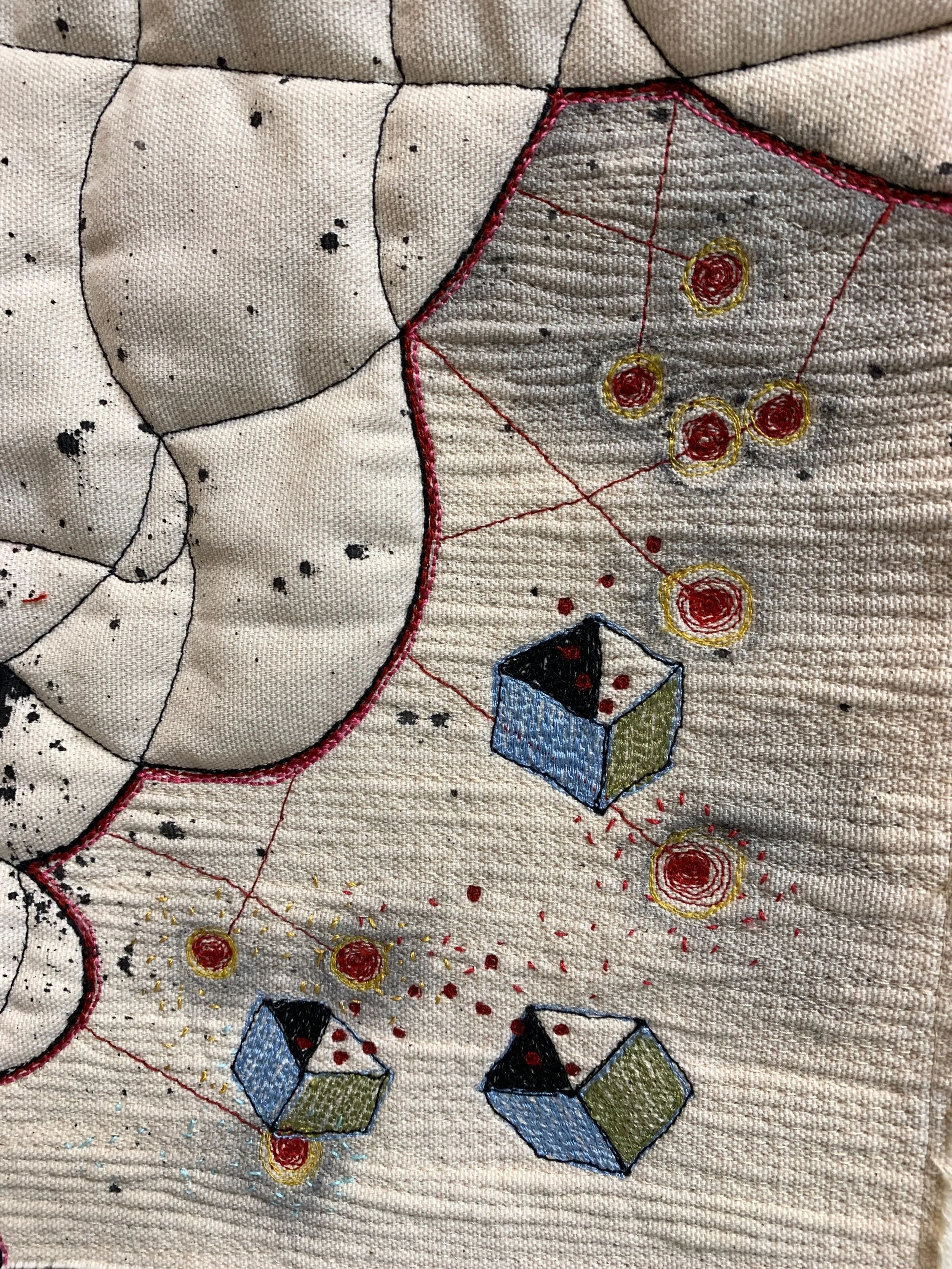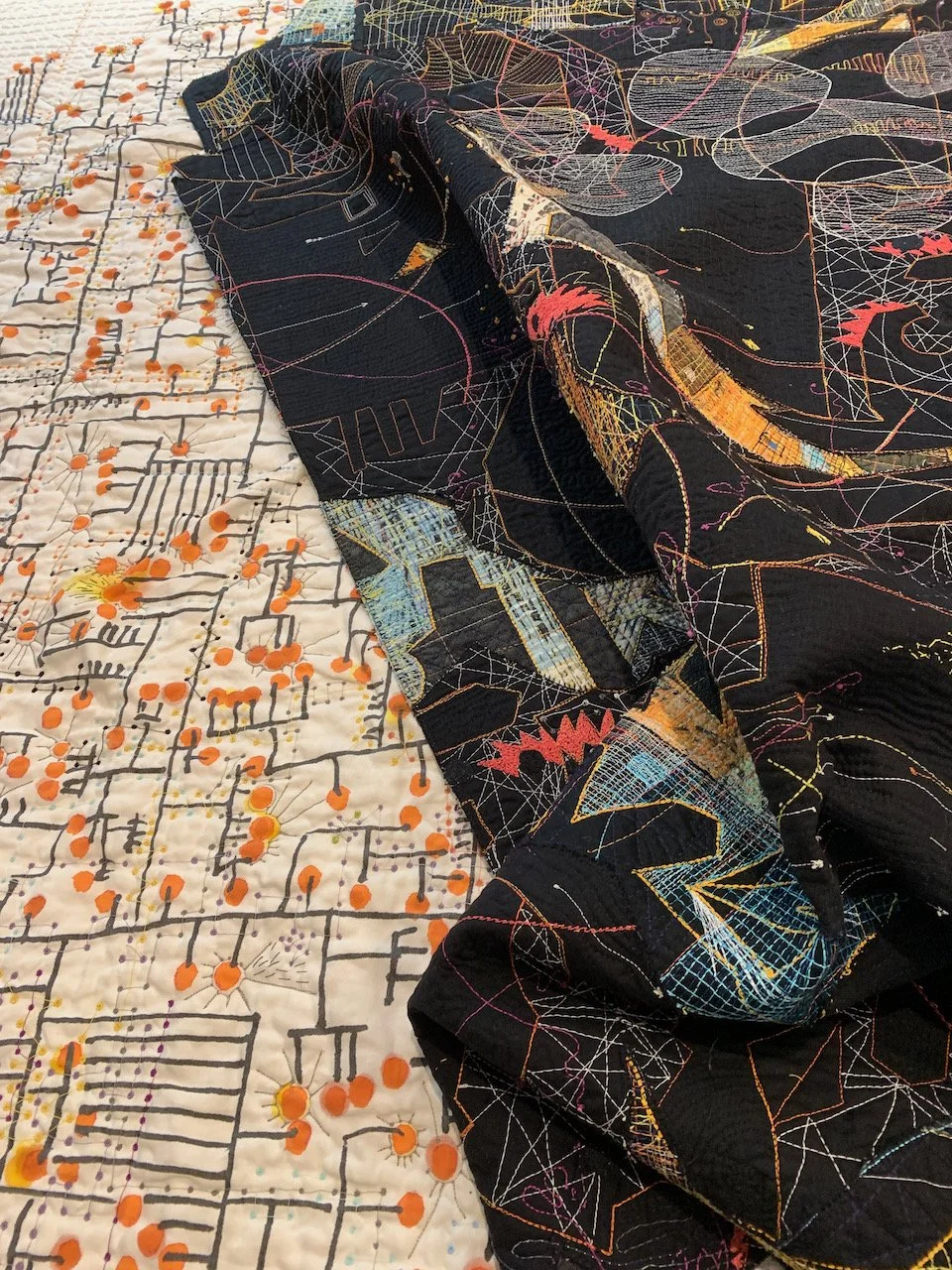inner-sections, a work in progress. 2015, Paula Kovarik
One of the best parts of any quilt is the fact that the closer you get the more you see. It's important to my art that people see a strong composition that reads from afar. But I also want to draw the viewer in to see details and depth.
This piece exemplifies that focus. The first layer is the piecing. The color scraps of fabric came together gradually to form this composition. It was done randomly, I knew only that I wanted a dark side and a light. (see more information about this process here)
Second, I focused on the intersections of the fabrics and stitched tangent lines at each seam in black and white across the piece. So, whenever two fabrics touched each other I separated them by stitching a line across the surface of the piece --black stitching on the white ground, white stitching on the black. My theory was that the overall composition would create hotspots of intersections where the seams would reveal invisible connections that a casual glance would not reveal. My theory seemed proven when I noticed nests of black lines between the two figures on the white ground.
Third, I decided to highlight the areas that formed triangles with green thread. This creates another level of dimension in the piece. Sort of like a floating superstructure.
zooming in reveals nests of stitching that are formed by the tangent lines and the floating green triangles that seem to hover over the piece.
Zooming in even closer reveals textural detail of the black on black stitching in the upper portion of the composition. This texture might be hard to see in this shot, very difficult to photograph. Adding this level of texture seems to complete the picture for me. I think I am close to binding this piece and trying another version.













































